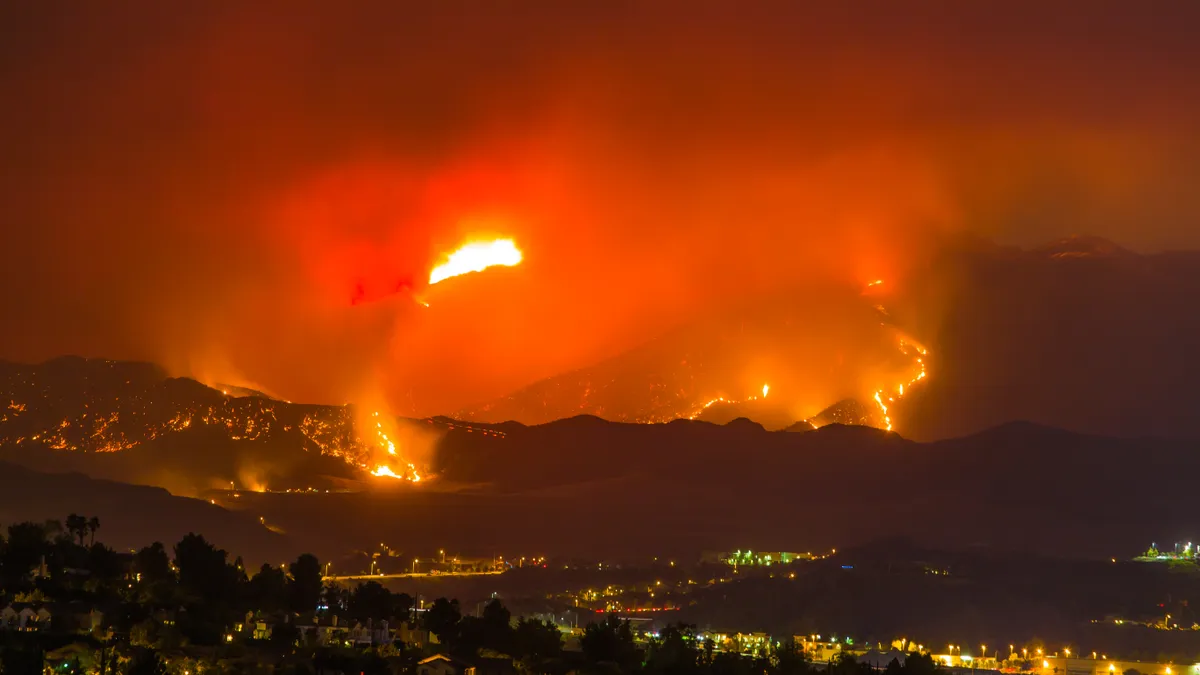Dive Brief:
- The deadliest wildfire in California's history was caused, at least in part, by Pacific Gas & Electric's transmission lines, according to a report from the state's fire investigator.
- The California Department of Forestry and Fire Protection (CalFire) issued its findings on Wednesday, though the utility in February concluded its equipment was likely the cause and recorded a $10.5 billion charge related to the disaster.
- California's wildfires have devastated the state, and utilities are facing billions in potential liability. The next wildfire "season" is just a few months away and state regulators are rushing to approve mitigation plans.
Dive Insight:
Cal Fire's conclusions are not a surprise — PG&E beat them to the punch by more than two months — but they still serve as a reminder that the state's utilities are quickly heading into the next high-risk period.
In 2018, there were more than 7,500 wildfires that burned over 1.8 million acres in California, according to the fire investigator. The Camp Fire in Butte County killed 85 people and burned 153,336 acres, as well as injuring several fire fighters.
PG&E said it is reviewing the Cal Fire report, but its conclusions are "consistent with the company’s previous statements."
"We have not been able to form a conclusion as to whether a second fire ignited as a result of vegetation contact with PG&E electrical distribution lines, as Cal Fire also determined," the utility said, adding that it is "fully cooperating with all ongoing investigations concerning the Camp Fire."
California utilities have prepared wildfire mitigation plans heading into this summer, and state regulators are expected to approve them this month. PG&E's plan includes real-time monitoring, enhanced vegetation management, re-inspections of critical electric infrastructure and the potential for proactively shutting down power based on extreme conditions.
In April, the California Public Utilities Commission proposed guidelines for how investor-owned electric utilities should notify customers in the event power lines must be de-energized. A key tenet is the idea that utilities may deploy de-energization only "as a measure of last resort."















